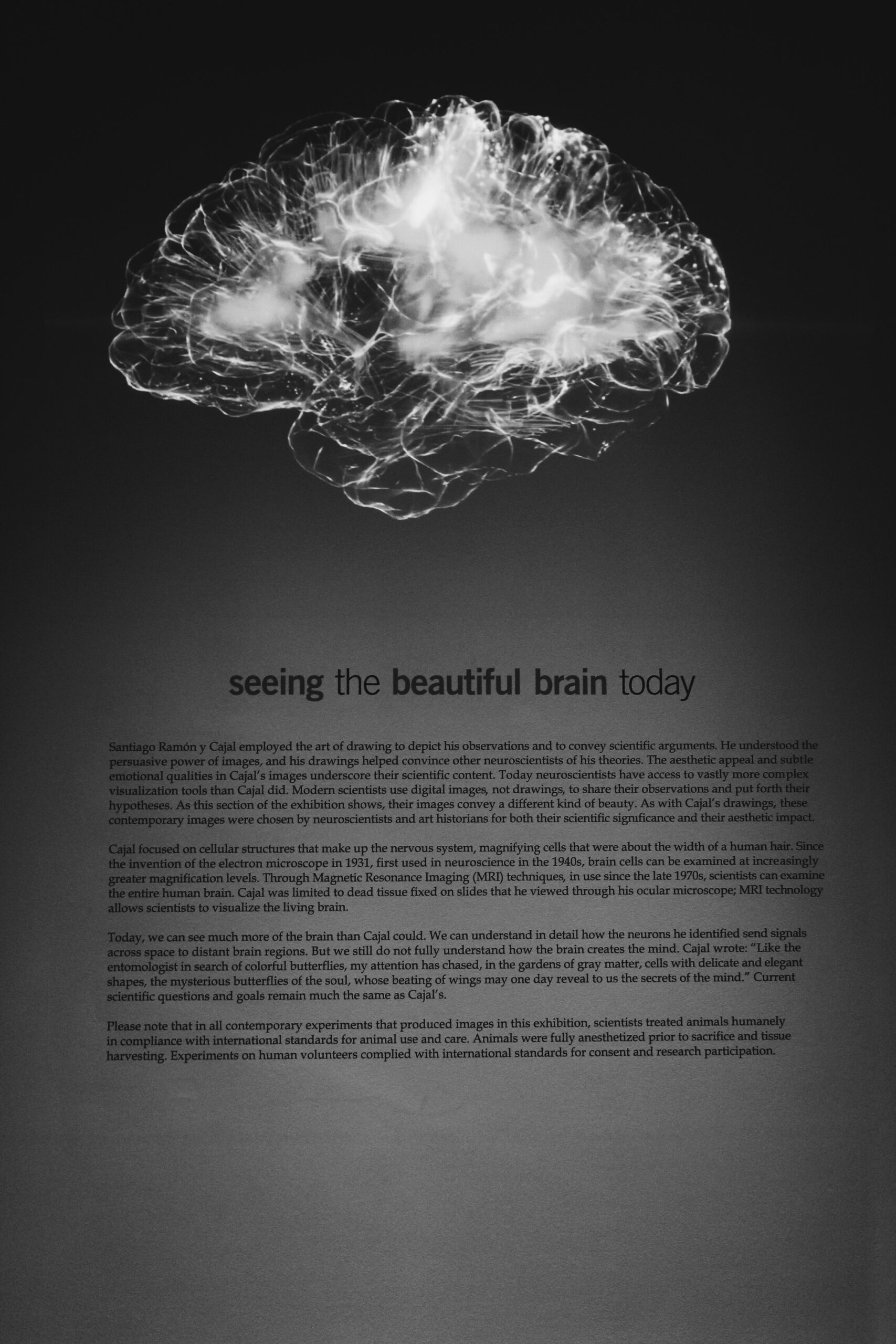Harnessing Neurofeedback Loops in Interactive Advertising: Revolutionizing Consumer Engagement
September 18, 2025 | by qqvmedia.com


Understanding Neurofeedback and its Relevance to Advertising
Neurofeedback is a specialized form of biofeedback that focuses on measuring and training brain activity. By utilizing advanced technologies such as electroencephalography (EEG), neurofeedback systems can monitor brainwave patterns in real-time and provide feedback based on those patterns. Essentially, the method enables individuals to regulate their brain functions, leading to improvements in mental health, cognitive performance, and emotional regulation. This training process involves rewarding the user with visual or auditory stimuli when they achieve desired brain states, ultimately fostering greater self-awareness and control over mental processes.
In recent years, neurofeedback has gained traction across various sectors, particularly in the fields of psychology, sports, and education. However, its relevance to advertising has begun to surface, presenting innovative opportunities for marketers aiming to enhance consumer engagement. By analyzing brain responses during advertising exposure, marketers can gather valuable insights into consumer preferences and emotional reactions. This understanding allows for the creation of more effective advertising strategies that cater to individual preferences, thus increasing overall effectiveness.
The application of neurofeedback in advertising revolves around the concept of understanding consumer behavior on a neurological level. By examining how audiences respond to different advertisements, brands can optimize their campaigns based on factual data regarding attentiveness, emotional engagement, and memory retention. This evidence-based approach highlights a growing trend in the marketing industry toward more personalized and responsive advertising strategies rooted in neuroscience. By leveraging neurofeedback to inform designs and messaging, advertisers can establish a deeper connection with their audience, enhancing both engagement and brand loyalty.
The Mechanisms of Neurofeedback Loops in Interactive Ads
Neurofeedback loops represent a transformative approach to interactive advertising, leveraging real-time data on consumer brain activity to enhance engagement. At the core of this mechanism is the collection of neural data through various technologies such as EEG (electroencephalogram) headsets or mobile devices equipped with sensors. These devices capture electrical activity in the brain, providing insights into user engagement levels, emotional responses, and cognitive states as they interact with advertisements.
Once data is collected, advanced algorithms process this information almost instantaneously. Using machine learning techniques, the collected data is analyzed to identify patterns of attention and engagement. For instance, spikes in certain brain wave activities may indicate heightened interest or emotional responses, prompting a shift in the advertising content displayed. This real-time analysis ensures that the advertising experience is not static but instead adapts dynamically to user interactions.
The processed data feeds back into the interactive advertising platform, creating a neurofeedback loop that continuously optimizes the user experience. Advertisers can adjust the visuals, audio, and overall message based on the real-time cognitive and emotional state of the user. For example, if a user displays signs of excitement while viewing a specific product, the advertisement may subsequently highlight that product further or present complementary items that could enhance user satisfaction.
Moreover, user interface design plays a pivotal role in facilitating these neurofeedback loops. Well-designed interfaces ensure that the transition of content remains seamless and intuitive, allowing for an uninterrupted engagement flow. This design approach, combined with neurofeedback technology, creates an interactive advertising experience that not only captures attention but also fosters deeper consumer connections by responding to their needs in real time.
Benefits and Challenges of Integrating Neurofeedback in Advertising
Integrating neurofeedback loops in interactive advertising presents numerous potential advantages that can significantly enhance consumer engagement. By leveraging real-time data on a user’s brain activity, advertisers can create tailored experiences that resonate more deeply with their target audience. This approach allows for improved targeting strategies, as campaigns can be optimized based on emotional responses, ensuring that promotional messages are not only seen but also felt. Furthermore, neurofeedback can heighten the effectiveness of advertisements by enabling brands to refine their messaging and content to align closely with audience preferences and behaviors.
However, the incorporation of neurofeedback into marketing practices is not without its challenges. Ethical considerations play a significant role, particularly concerning consumer consent and the manipulation of emotional responses. Marketers must tread carefully, ensuring that they respect privacy rights while still leveraging the insights gathered from neurofeedback data. The potential for misuse of such sensitive information raises essential questions about consumer trust and the long-term implications of utilizing neurofeedback in advertising strategies.
Privacy concerns are paramount, as the collection of neurological data necessitates stringent data protection measures. Companies may face scrutiny in how they store, handle, and analyze this information, thereby emphasizing the importance of transparency with consumers. Additionally, technical challenges can arise during the implementation of neurofeedback systems, including the need for sophisticated technology and expertise to interpret neural data accurately. For brands venturing into this innovative realm, understanding both the benefits and pitfalls is crucial.
Real-world case studies demonstrate the duality of this approach. Successful implementations have led to increased engagement and sales, while failures highlight the risks of consumer alienation through perceived invasions of privacy. By learning from these examples, companies can navigate the complexities associated with neurofeedback in advertising more effectively.
The Future of Interactive Advertising: Trends and Predictions
The future of interactive advertising is poised for transformative advancements, driven by the increasing integration of neurofeedback loops. As brands adopt this innovative technology, we can anticipate significant changes in how consumers engage with advertisements. Neurofeedback loops enable a more personalized advertising experience by analyzing the neural responses and emotional engagement of consumers in real-time. This data-driven approach allows marketers to tailor their messages in ways that resonate more effectively with target audiences, creating a deeper connection between brands and consumers.
One of the key trends we foresee is the evolution of consumer-brand relationships. With enhanced insights into consumer behavior gained from neuroscientific research, brands will be equipped to create marketing strategies that are not just reactive but also proactive. This adaptability will mean that consumers are not simply passive participants; they will become active contributors in shaping the advertising experience. For instance, using cognitive responses gathered through neurofeedback, brands can engage in iterative learning processes, continuously refining their advertising strategies to meet the needs and preferences of consumers.
Furthermore, we predict that the integration of neurofeedback technology will drive ethical considerations in advertising practices. As consumers become more aware of how their data is being utilized, brands will need to prioritize transparency and trustworthiness. This shift towards ethical marketing practices will not only foster stronger consumer relationships but will also enhance brand loyalty over time. By prioritizing consumer well-being, brands can harness neurofeedback loops to cultivate an advertising environment that is not only effective but also respectful of consumer insights.
In the coming decade, the advertising landscape will likely mirror the rapid advancements in technology and consumer expectations. By utilizing neurofeedback loops, brands will not only engage consumers more effectively but will also transform their marketing strategies, leading to a more interactive and tailored advertising future.
RELATED POSTS
View all


